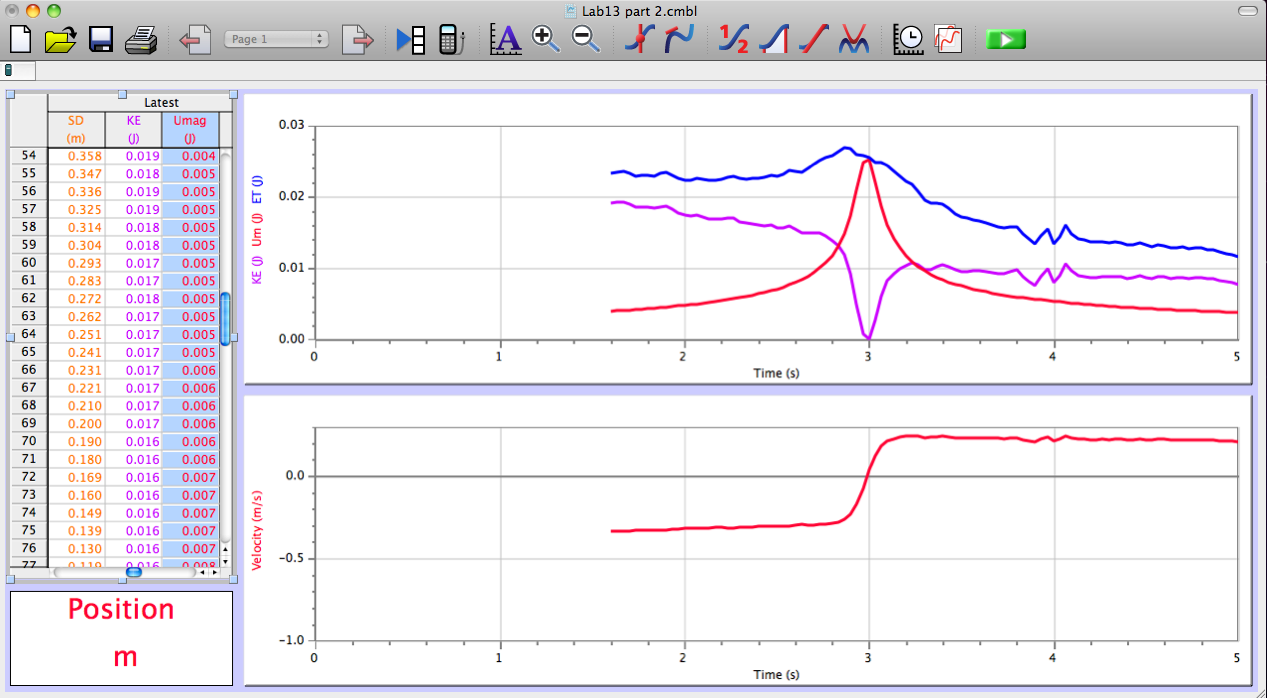Moment of Inertia and Frictional Torque
(How long until the cart hits the bottom of the track??)
Purpose: To determine the total moment of inertia of a spinning disk apparatus about its center of mass, then in turn to calculate the frictional torque in order to determine the amount of time required for a cart (attached by a string to the spinning disk apparatus) to reach the bottom of an inclined plane 1 m long.
Procedure: Firstly, we took the appropriate measurements of the rotating apparatus. Depicted below is a diagram of said measurements:
(Diagram with relevant measurements for each piece of mass in cm)
The total mass (4,829 g) was stamped on the large portion of the rotating apparatus. In order to determine the moment of inertia for this entire mass, we need to sum up the moment of inertia for each individual piece (ie, 1, 2, 3).
In order to achieve this, we utilized our measured values from above to determine the volume of each one. We then summed these volumes to give us the total volume of the rotating mass. We then took each pieces volume and divided it by the whole to determine the percentage of volume each piece took up. This percentage is the same percentage of the overall mass for each individual piece. These calculations are shown below, along with our determination for the moment of inertia of the whole mass:
(Determination of percentage of volume of each piece; derivation of I of system)
From this, we have:
Itotal = 0.0209 kg * m^2
Our next step was to determine the frictional torque exerted on this system. In order to achieve this we first must determine the angular acceleration as the rotating mass comes to rest. We can use this value of deceleration and multiply it by our value for the total moment of inertia of the system to determine the value of frictional torque (which is required to accurately predict the amount of time required for a cart attached to the mass via a string to travel 1m down an inclined plane).
We used LoggerPro to analyze video capture data of the rotating mass as it came to rest while starting with some initial angular velocity. We then plotted Theta v. Time within LoggerPro by clicking a piece of tape (attached to the rotating mass) in the video capture data each time it was at the peak of rotation. Below is the aforementioned graph:
(LoggerPro plot of Theta v. Time)
We applied a quadratic fit to the above graph. Doing this yields the angular acceleration of the rotating mass; it is found by doubling the value of "A" found in the quadratic above.
From this, we have:
alpha = -0.3954 rad/s^2
Using our value of I and alpha, we have:
Frictional Torque = 0.00826 kg(m/s)^2
We know have all we need to predict the time it will take a cart attached to this rotating mass, via a string, to travel a distance of 1 m along an inclined "frictionless" surface. This experimental apparatus is shown below:
(Experimental Apparatus)
Below are the diagrams and calculations necessary to predict the time it takes for the cart to travel 1 m:
(Predicting time for cart to travel 1 m along an incline @ 49.1 degrees relative to the floor)
Our predicted value is:
Theoretical Time = T1 = 7.30 s
After calculating our theoretical time, we ran the experiment using stopwatches to record the time it took the cart to travel 1 m along the track. This value came out to be:
Actual Time = T2 = 7.35 s
Conclusion: Our theoretical value was only of by .05 s, which is understandable since we assumed absolutely no friction in the track the cart traveled along. Other sources of uncertainty include incorrect measurements of the rotating apparatus, which would effectively alter several of our calculations throughout the theoretical work. Another source of uncertainty could have been encountered if the string running from the cart to the rotating mass was not parallel with the track the cart was traversing.

























%2BBefore%2BCollision.png)
%2BAfter%2BCollision.png)
%2BAfter%2BCollision.png)











